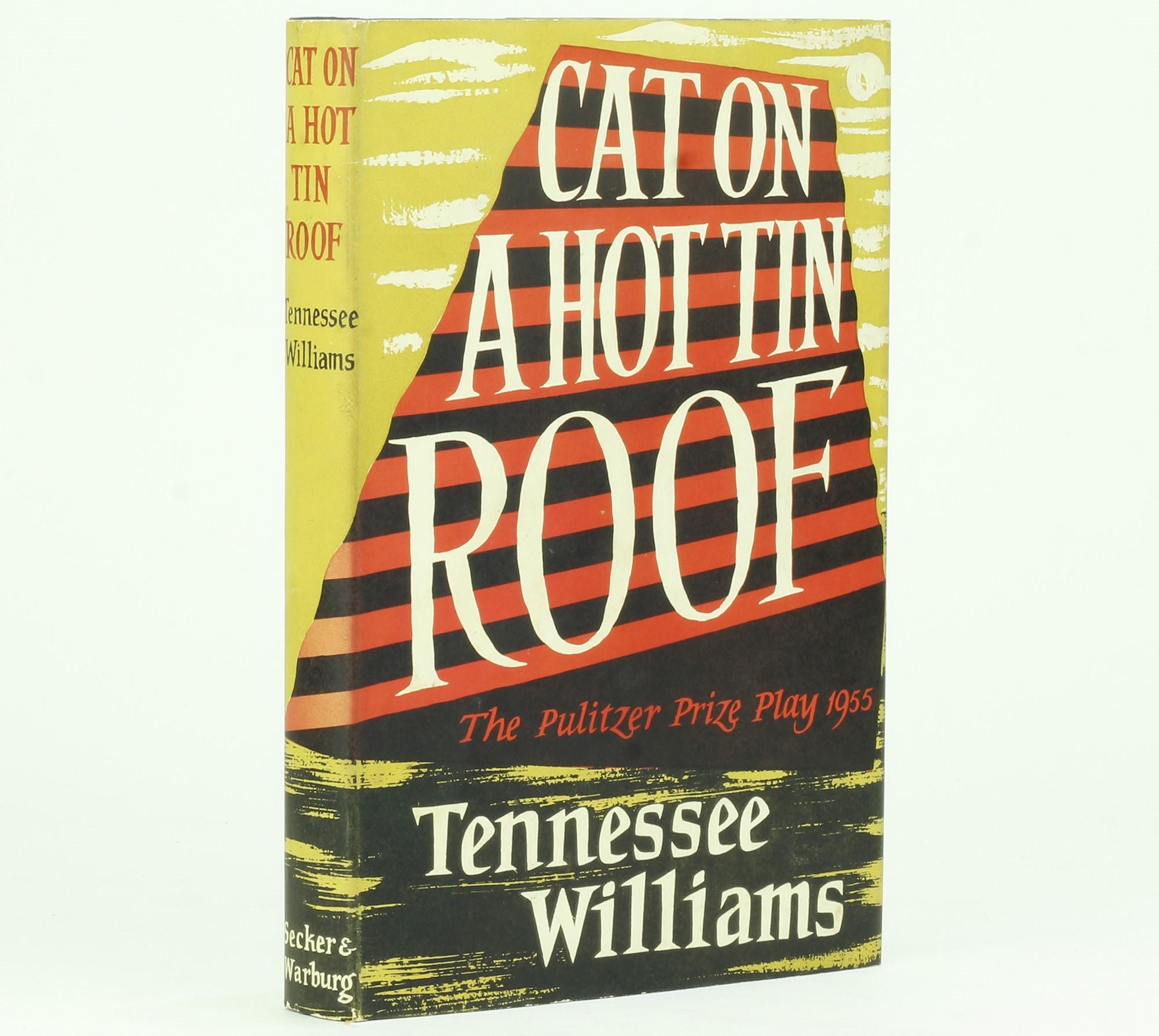
Tennessee Williams’ iconic play, “Cat on a Hot Tin Roof,” has captivated audiences for decades with its powerful storytelling and complex characters. Set against the backdrop of a wealthy Southern family’s crumbling plantation, the play explores themes of greed, deception, and the desperate search for love and acceptance. In this article, we will delve into “Cat on a Hot Tin Roof” and discover 15 unbelievable facts about the play and its playwright, Tennessee Williams. From its controversial reception to its enduring impact on American theater, these facts will shed light on the fascinating world of “Cat on a Hot Tin Roof” and the genius behind it. So grab a seat and prepare to be amazed by these gripping insights into Tennessee Williams’ masterpiece.
Key Takeaways:
- Cat on a Hot Tin Roof is a timeless play that explores intense family dynamics, societal pressures, and the struggle for identity, making it a staple of theatrical history.
- Tennessee Williams’ powerful and poetic dialogue, combined with compelling themes of desire, repression, and sexuality, continues to captivate audiences and scholars alike.
The play premiered on Broadway in 1955.
One of the most notable facts about Cat on a Hot Tin Roof is that it first premiered on Broadway in It was written by the renowned American playwright Tennessee Williams and quickly gained popularity for its intense drama and powerful themes.
The play is set in Mississippi on a plantation.
Set in the 1950s in the American South, Cat on a Hot Tin Roof takes place on a plantation in Mississippi. This setting provides a rich backdrop for the complex family dynamics and societal issues that are explored throughout the play.
It explores themes of desire, mendacity, and the search for identity.
One of the key elements that make Cat on a Hot Tin Roof so compelling is its exploration of various themes. The play delves into the themes of desire, mendacity (dishonesty), and the search for identity, capturing the internal struggles of the characters and the conflicts that arise within the family.
The character of Brick is a former football player.
One of the central characters in the play is Brick, a former football player who is grappling with personal demons. His story unfolds throughout the play, revealing layers of vulnerability, frustration, and a deep-seated sense of disillusionment.
The play was adapted into a successful film in 1958.
Following the success of the Broadway production, Cat on a Hot Tin Roof was adapted into a film in The movie starred Elizabeth Taylor and Paul Newman, and was well-received by audiences and critics alike.
Tennessee Williams won a Pulitzer Prize for Drama for Cat on a Hot Tin Roof.
In recognition of its literary excellence and profound impact, Tennessee Williams was awarded the Pulitzer Prize for Drama for Cat on a Hot Tin Roof in The play continues to be celebrated as a masterpiece in American theater.
The characters of Maggie and Brick have a strained relationship.
The tumultuous relationship between Maggie and Brick forms a central plotline in the play. Their interactions are filled with tension, secrets, and emotional turmoil, adding to the dramatic intensity of the story.
The original title of the play was “A Cat on a Hot Tin Roof.”
Tennessee Williams originally titled the play “A Cat on a Hot Tin Roof,” but it was later shortened to simply “Cat on a Hot Tin Roof.” This change in title did not affect the play’s popularity or impact.
The play addresses issues of societal expectations and family pressures.
One of the underlying themes in Cat on a Hot Tin Roof is the pressure society puts on individuals and families. The play delves into the expectations and demands placed on the characters, offering a commentary on the influence of societal norms.
The play incorporates elements of Williams’ own personal experiences.
Tennessee Williams drew inspiration from his own life when writing Cat on a Hot Tin Roof. Many of the characters and situations in the play reflect aspects of his personal experiences, adding an extra layer of depth and authenticity to the story.
Cat on a Hot Tin Roof has been revived numerous times.
Since its original premiere, Cat on a Hot Tin Roof has been revived multiple times, both on Broadway and in theaters worldwide. Its timeless themes and compelling characters continue to resonate with audiences, making it a staple of the theatrical repertoire.
The play explores themes of sexuality and repression.
Sexuality and repression play significant roles in Cat on a Hot Tin Roof. The characters grapple with their desires, societal expectations, and the consequences of suppressing their true selves, leading to compelling moments of emotional conflict.
Cat on a Hot Tin Roof has been studied extensively in academic settings.
The profound impact and complex themes of Cat on a Hot Tin Roof have made it a subject of extensive academic analysis. Its exploration of family dynamics, gender roles, and social pressures has made it a favorite among literature and theater scholars.
The play has been praised for its powerful and poetic dialogue.
Tennessee Williams’ mastery of language is evident in Cat on a Hot Tin Roof. The play is filled with powerful and poetic dialogue that captures the intensity, vulnerability, and raw emotions of the characters, contributing to its enduring popularity.
Cat on a Hot Tin Roof remains a staple of the theatrical world.
Even decades after its original debut, Cat on a Hot Tin Roof continues to be performed in theaters around the world. Its timeless themes, rich characterization, and gripping drama ensure its place as a beloved and enduring piece of theater history.
Conclusion
Cat on a Hot Tin Roof, written by Tennessee Williams, is a timeless play that continues to captivate audiences with its complex characters and powerful themes. Through the story of the dysfunctional Pollitt family, Williams explores topics such as love, lies, greed, and the human struggle for identity and acceptance.The play’s title itself, Cat on a Hot Tin Roof, serves as a metaphor for the characters’ internal conflicts and the pressures they face. As the audience delves deeper into the lives of the Pollitts, they witness a web of deceit and hidden desires unravel, ultimately culminating in a dramatic climax.Williams’ masterful storytelling and rich character development have cemented Cat on a Hot Tin Roof as a classic of American theatre. Its exploration of taboo subjects and its reflection of societal tensions make it a thought-provoking piece that continues to resonate with audiences today.In conclusion, Cat on a Hot Tin Roof is a must-see play that examines the complexities of human relationships, the masks we wear, and the consequences of suppressing our true selves. With its compelling narrative and powerful performances, this Tennessee Williams masterpiece stands the test of time.
FAQs
1. Is Cat on a Hot Tin Roof based on a true story?
No, Cat on a Hot Tin Roof is a work of fiction and is not based on a true story. However, it is inspired by Tennessee Williams’ own experiences and observations of Southern life and its complexities.
2. What are the major themes explored in Cat on a Hot Tin Roof?
Some of the major themes explored in Cat on a Hot Tin Roof include relationships, family dynamics, mendacity, mortality, and the search for truth and acceptance.
3. Are there any film adaptations of Cat on a Hot Tin Roof?
Yes, Cat on a Hot Tin Roof has been adapted into film multiple times. The most famous adaptation is the 1958 film starring Elizabeth Taylor and Paul Newman.
4. Why is Cat on a Hot Tin Roof considered a classic?
Cat on a Hot Tin Roof is considered a classic for its powerful storytelling, rich character development, and exploration of taboo subjects. It has also had a significant impact on American theatre and continues to be performed and studied to this day.
5. Can Cat on a Hot Tin Roof be enjoyed by all audiences?
While Cat on a Hot Tin Roof is a highly acclaimed play, it does deal with mature themes and contains strong language. It may not be suitable for all audiences, particularly younger viewers.
If you're fascinated by the complexities of human relationships and the power of storytelling, don't miss our exploration of other iconic works. Delve into the haunting world of Southern Gothic literature, uncover the depths of Tennessee Williams' genius, and be captivated by the raw emotion of American drama. Each article offers a unique perspective on the human experience, inviting you to explore the shadows and light that define our lives.
Was this page helpful?
Our commitment to delivering trustworthy and engaging content is at the heart of what we do. Each fact on our site is contributed by real users like you, bringing a wealth of diverse insights and information. To ensure the highest standards of accuracy and reliability, our dedicated editors meticulously review each submission. This process guarantees that the facts we share are not only fascinating but also credible. Trust in our commitment to quality and authenticity as you explore and learn with us.


